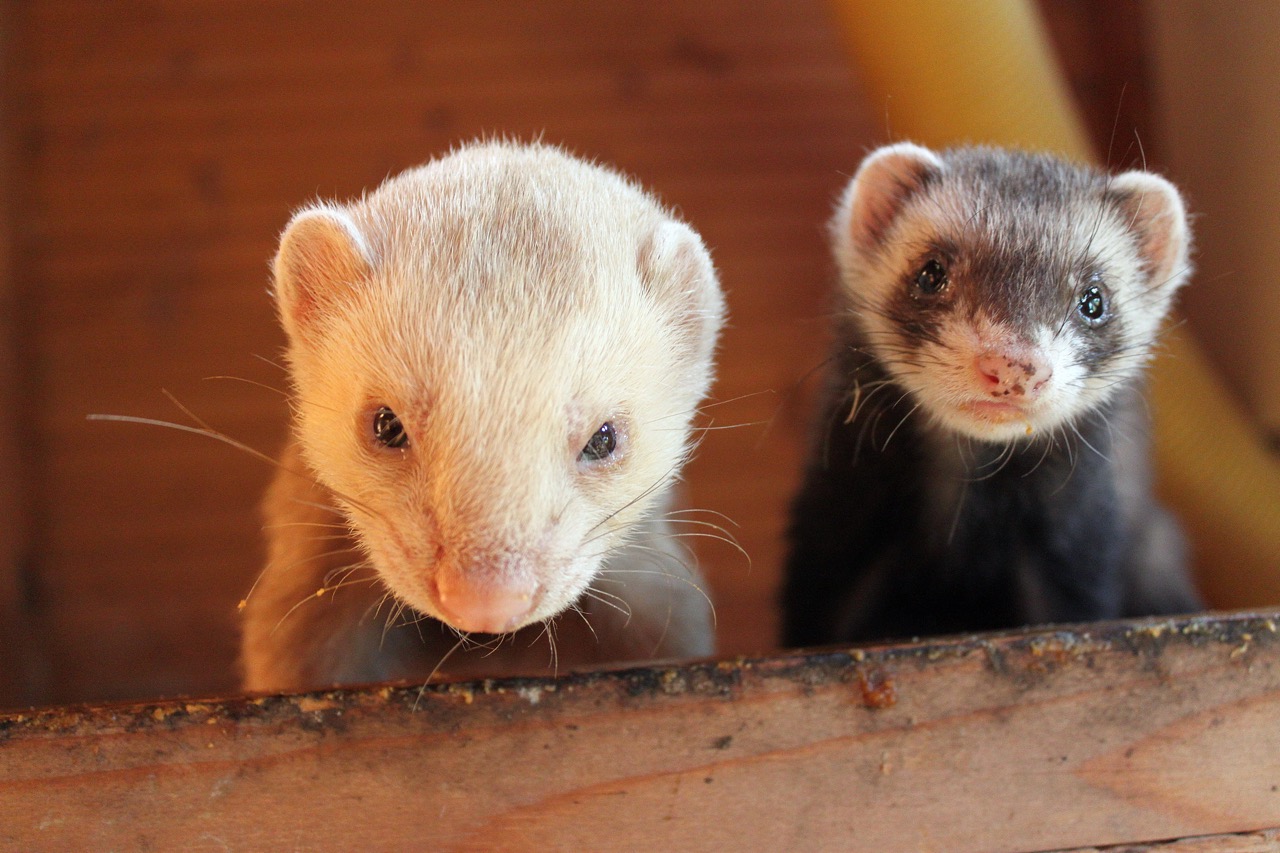Creating a safe and secure environment for your ferret is crucial for its well-being and happiness. Ferrets are curious, playful animals that thrive in a stimulating habitat. However, their inquisitive nature can also lead them into dangerous situations if their living space is not properly secured. This article will guide you through various aspects of ensuring your ferret’s cage is safe, from understanding their behavior to routine maintenance.
Understanding Ferret Behavior and Habitat Needs
Ferrets are inherently adventurous creatures, known for their playful antics and boundless energy. As natural explorers, they often seek out small spaces to squeeze into, which can be problematic if their cage is not designed with this behavior in mind. Understanding this characteristic is integral to providing them with a safe environment. Ferrets also require ample space to roam, play, and explore, as well as companionship, either from other ferrets or from their human caregivers.
In their natural habitat, ferrets would make use of tunnels, dens, and various hiding spots. To replicate this environment, their cages should be spacious and include multiple levels, ramps, and hiding places. This will not only satisfy their instinctual needs but also keep them engaged and entertained. Thus, understanding ferret behavior is the first step in building a secure and enriching habitat that caters to their unique lifestyle.
Additionally, ferrets are social animals that thrive on interaction and stimulation. A cage that is too small or lacking in enrichment can lead to boredom and behavioral issues, such as excessive digging or biting. Providing toys, climbing structures, and safe items to chew on can help mitigate these risks and ensure your ferret remains happy and healthy in its habitat.
Choosing the Right Cage for Your Ferret
Selecting the appropriate cage for your ferret is one of the most important decisions you will make as a ferret owner. Ferrets require ample space to move around, so a multi-level cage with a minimum size of 24 inches wide, 24 inches deep, and 36 inches high is recommended. It’s essential to opt for a cage that allows for vertical climbing, as ferrets love to explore different levels. Consider a cage with several compartments and levels to accommodate their natural curiosity and playful nature.
When choosing a ferret cage, ensure that it is constructed from durable materials that can withstand their chewing tendencies. Wire cages with a spacing of no more than 1 inch between bars are ideal, as they prevent escape while offering adequate ventilation. Avoid cages made of plastic or flimsy materials, as ferrets may easily chew through them. Additionally, cages with removable trays can simplify cleaning and maintenance, promoting a hygienic living environment for your pet.
Lastly, consider the location of the cage within your home. Ferrets are sensitive to temperature extremes, so placing the cage in a stable environment—away from direct sunlight, drafts, or extreme temperatures—is vital for their comfort. Accessibility is also crucial; ensure that the cage is easy to reach for regular interaction and cleaning. The right cage can make a significant difference in your ferret’s quality of life.
Essential Safety Features for Ferret Cages
Safety features are paramount when it comes to your ferret’s cage. One of the most critical safety considerations is ensuring that the cage is escape-proof. Ferrets are notorious escape artists, so it is essential to select a cage with secure latches and lock mechanisms. Test the locks frequently to ensure they remain functional and do not become loose over time. Additionally, inspect the cage for any sharp edges or gaps where your ferret could get stuck or injured.
Another important feature to look for is a solid base to prevent your ferret from digging or escaping beneath the cage. Some ferret owners choose to place their cage on a stand or a secure platform to elevate it and reduce the risk of escape. Ensure that the base is easily cleanable and designed to contain any messes. A solid base will not only contribute to a safer environment but will also make maintenance more manageable.
Moreover, consider the potential hazards within the cage itself. Avoid using bedding materials that can be ingested, such as cedar or pine shavings, as they can be harmful to ferrets. Instead, opt for paper-based bedding or fleece fabric that is both safe and comfortable. Ensure that any toys or accessories inside the cage are free of small parts that could be chewed off and swallowed. By incorporating these safety features, you can create a secure and joyful environment for your ferret.
Regular Maintenance Tips for a Secure Environment
Regular maintenance of your ferret’s cage is essential to ensure a safe and secure living space. Start with daily checks to see if any toys or accessories need cleaning or replacing. Ferrets can be messy, and soiled bedding or uneaten food can lead to unsanitary conditions that may jeopardize their health. Spot cleaning daily can help maintain a clean environment and prevent odors from building up.
Additionally, schedule a thorough cleaning of the entire cage at least once a week. This includes removing all bedding, toys, and accessories, followed by disinfecting the cage surfaces with pet-safe cleaners. Rinse thoroughly to eliminate any traces of cleaning agents. This not only ensures a hygienic environment but also allows you to inspect the cage for any wear and tear or potential hazards that may have developed over time.
Lastly, consider scheduling routine checks on the cage’s structural integrity. Inspect the bars, latches, and base for any signs of damage or chewing. If you notice any wear, address it immediately to prevent accidents or escapes. Regular maintenance checks can help you stay on top of any potential issues, ensuring that your ferret’s habitat remains safe and secure for years to come.
Ensuring a safe and secure environment for your ferret is a multifaceted process that requires a combination of understanding their behavior, selecting the right cage, incorporating essential safety features, and committing to regular maintenance. By following these guidelines, you can provide your ferret with a habitat that not only meets its safety needs but also allows it to thrive. A secure environment contributes significantly to your ferret’s overall well-being, allowing it to express its playful nature within safe boundaries.










